Quick Summary :- Mobile App Development industry is growing at a rapid pace. To keep up the pace, developers need to keep abreast with the latest developments and frameworks. Here, in this article, we have discussed some of the top mobile app development frameworks one needs to have in mind in 2025. Read in detail
Choosing the right mobile app framework for 2025.. In Q1 2024, users downloaded around 25.6 billion apps from Google Play a drop from 27 billion in Q1 2023. The Apple App Store had around 8.4 billion downloads. And people spend around 4 hours and 37 minutes daily on their smartphones. Mobile apps are a big part of our daily lives.
Whether you’re a developer working on your next big thing or a business looking to launch an app, choosing the right tech stack is the first step. Frameworks like Flutter, React Native, and SwiftUI are still the leaders but new players and cross platform solutions are changing the game.
In this guide we’ll go through the top mobile app frameworks, their strengths, use cases and how to choose the one that fits your goals, team and budget.
Top Mobile App Development Frameworks to Use in 2025
We at eSparkBiz, will give you the necessary details about the top mobile app development frameworks that will be in demand in 2025.

React Native
One of the most popular mobile app development frameworks, React Native was introduced by renowned organization Facebook to build robust mobile apps. What has made this framework popular among the developers is the programming language it uses i.e., JavaScript.
According to a survey, JavaScript or JS is one of the most famous programming languages for the past 8 years. React Native has vast community support and requires fewer team members for app development.
The reason behind it is that React Native supports a single codebase for multiple platforms and operating systems.
Architecture – React Native works on the flux architecture that ensure unidirectional flow of data. Also, it needs a bridge to communicate with the native modules.
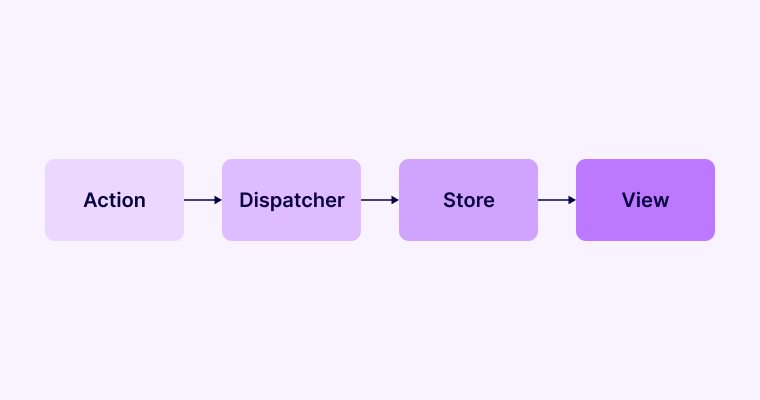
Apps developed by using React Native –
Instagram, Pinterest, Myntra, Walmart, Wix
Benefits of React Native-
- Single codebase
- Cost-effective
- Easy installation
- Community support
- Supports 3rd party libraries
Flutter

Flutter is an open-source mobile app development framework for creating native applications. What makes this framework unique is the use of the dart programming language. Developed by the tech-giant Google, Flutter is now managed by an ECMA standard.
Flutter’s specialty lies in its vast range of in-built components with almost all the technologies required for efficient mobile app development. With features like hot-reload and usage of the minimal codebase, this framework enables fastening of the entire development procedure.
Architecture – Flutter is based on the dart framework and has a layered architecture. The three layers are composed of a C++ engine, an embedder, and a dart framework. All the layers are responsible for performing different functions.
Apps developed by using flutter-
Google Ads, Alibaba, Birch Finance, Reflectly, Cryptograph
Benefits
- User-friendly interface
- Hot-Reload
- Saves time
- Minimal and single codebase
- Efficient debugging
Xamarin

It is one of the mobile app development frameworks that is opted by developers who are efficient in working with .NET. Xamarin is an open-source framework and is used for building apps not only for Windows but for platforms like iOS and Android.
What makes this framework standout is that it allows developers to use the single C# codebase for different platforms. You can write the business logic in one programming language and use it for iOS, Android, or some other operating system.
The basic purpose of Xamarin is to extend and enhance the .NET developer platform. It does this by adding libraries and tools to the platform.
Moreover, one of the major reasons to trust this framework’s functionality is that it is owned by the world’s premium tech organization “Microsoft.”
Architecture – The entire codebase of Xamarin’s architecture is written in C#. Xamarin allows building native UI for cross-platform app development. Additionally, .NET being the base of Xamarin, helps in garbage collection and memory allocation.
Apps developed by using flutter-
The World Bank, CA mobile, Alaska Airlines, Oro, Picturex
Benefits
- Memory Allocation
- Active community support
- Native user experience
- Sharable code
- Cost-efficient
Swiftic
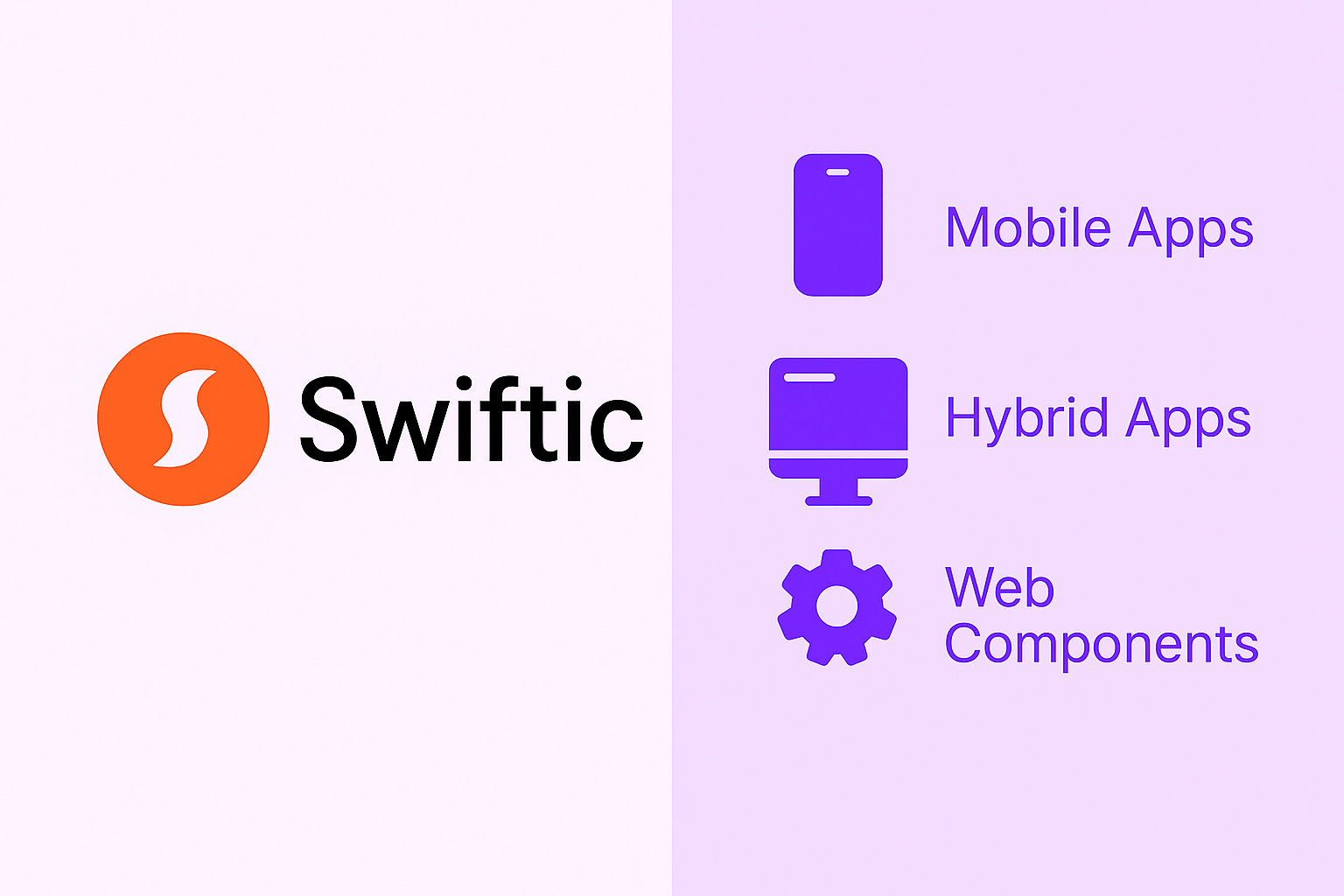
One of the most easy-to-use mobile app development frameworks, Swiftic allows you to create your app. It is a DIY app maker that requires no or minimal code. The developers don’t need to dive deep into coding while using this framework.
Although, it also tests the developer’s creativity as it comes with many ready-made components and features. Its user-friendly interface is a plus point, along with smooth navigation. Also, you can develop the app in a comparatively lesser amount of time.
Enriched with tools like Advance Analytics, social and media feed, expert help, and app promotions, this framework is a one-stop solution for developers who can build apps that meet the customer’s demands.
Apps built using Swiftic
Thousands of small businesses around the globe have opted for Swiftic who can’t afford a team of high-paid developers.
Benefits
- Flexible payment plan
- In-app coupons
- Easy to use
- Push notifications and scratch cards
- App publication assistance
- Minimal coding
Ionic

Ionic is an open-source, cross-platform mobile app development framework introduced by -Max Lynch, Adam Bradley, and Ben Sperry, of Drifty Co. It comes with a bunch of pre-designed UI components that are created to look appealing on different mobile devices.
Also, Ionic’s special feature is its developer-friendly tools for creating, testing, and deploying mobile applications. The CLI or command-line utility of this framework can be easily installed by using NPM.
Along with this, you can experience the smooth functioning of this framework in case of integration with the front-end frameworks. Ionic provides seamless integration with Vue, React, and Angular.
If you are well versed with Javascript and HTML, then using Ionic will be much easier for you.
Apps built using Ionic –
JustWatch, Sworkit, MarketWatch, Pacifica, Diesel
Benefits
- Easy-to-learn technology
- Rich UI components
- Seamless Integrations
- Single codebase
- Quick app development
JQuery Mobile
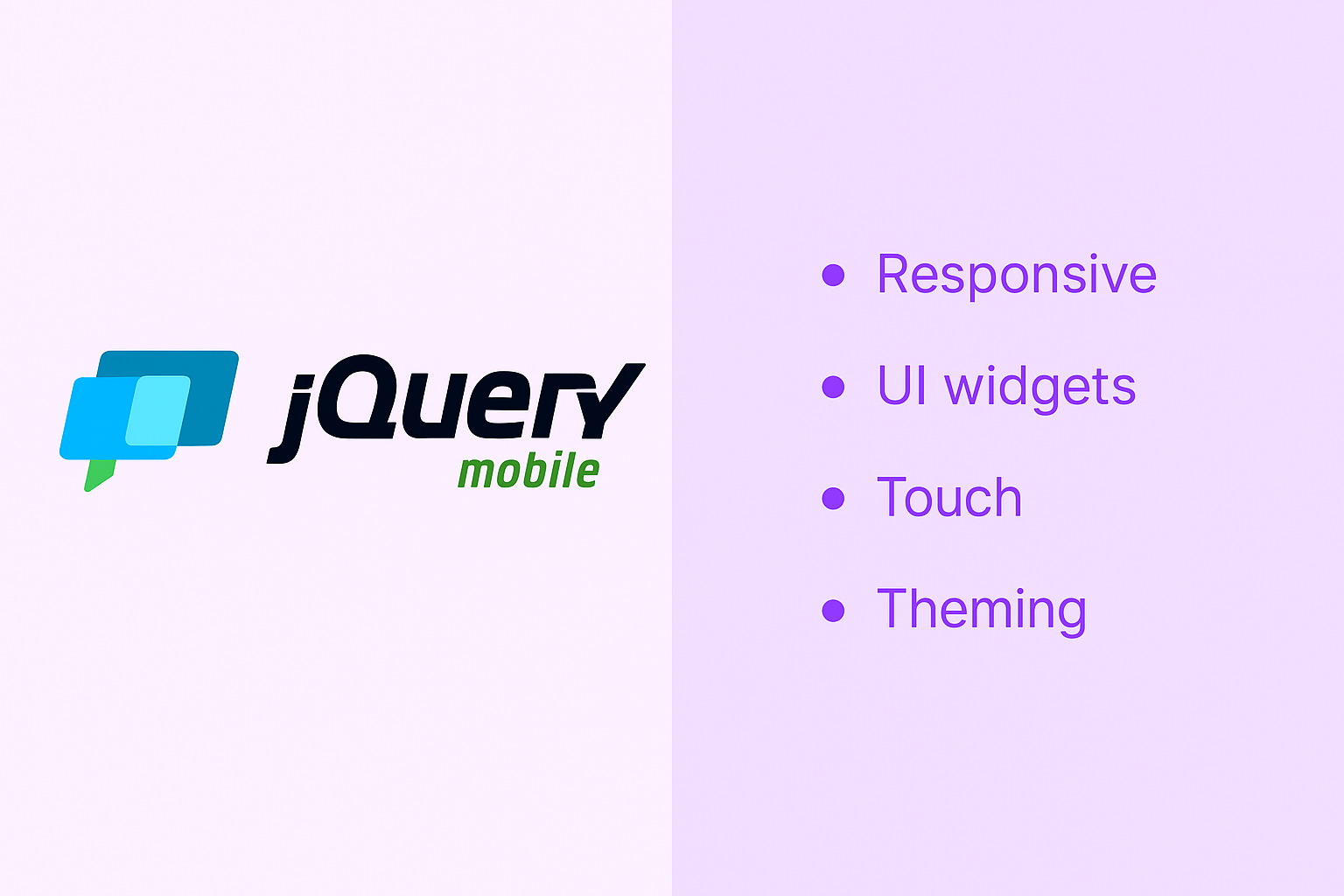
JQuery Mobile competes with other products in the Application Frameworks categories. It has a 18.47% market share in the Application Frameworks category, and JQuery Mobile has 2,240 customers in 10 countries.
It is also seen as a JavaScript library to develop framework-compatible apps. Also, it enables seamless integrations with other frameworks. What makes this app unique is it allows developers to build a single app that can work on all the platforms like desktops, tablets, and smartphones.
Thus, JQuery helps in saving time for the developers. Its theming framework provides you with options for choosing themes for a customized and personal experience.
Developed by the jQuery project team, this framework is based on HTML5. If you are well-versed with Javascript or jQuery, using the JQuery Mobile app framework would be easier for you to build interactive web pages and applications.
Benefits
- Touch-optimized widgets for UI
- Seamless Integration
- Framework compatibility
- Responsive apps
- Scalability
Apache Cordova

Apache Cordova, formerly known as Adobe PhoneGap, is an open-source mobile app development framework that allows developers to build cross-platform applications using HTML, CSS, and JavaScript. Originally developed by Nitobi and later acquired by Adobe, the project was donated to the Apache Software Foundation and rebranded as Apache Cordova.
The main goal of Apache Cordova is to make building cross platform mobile apps using web technologies like HTML, CSS and JavaScript as easy as possible. Since it has a gentle learning curve it’s a great choice for developers who are already comfortable with JavaScript and basic front-end coding.
Wikipedia has used Apache Cordova to build apps that have a native like experience despite being built with hybrid technologies. It bridges the gap between native performance and web development.
But if you plan to build a resource heavy or graphics intensive mobile game, Apache Cordova might not be the best choice due to performance limitations.
Benefits
- Fast development
- Cross platform
- Supports major OS
- Easy to use (HTML, CSS, JS)
- Backed by Apache
Mobile Angular UI
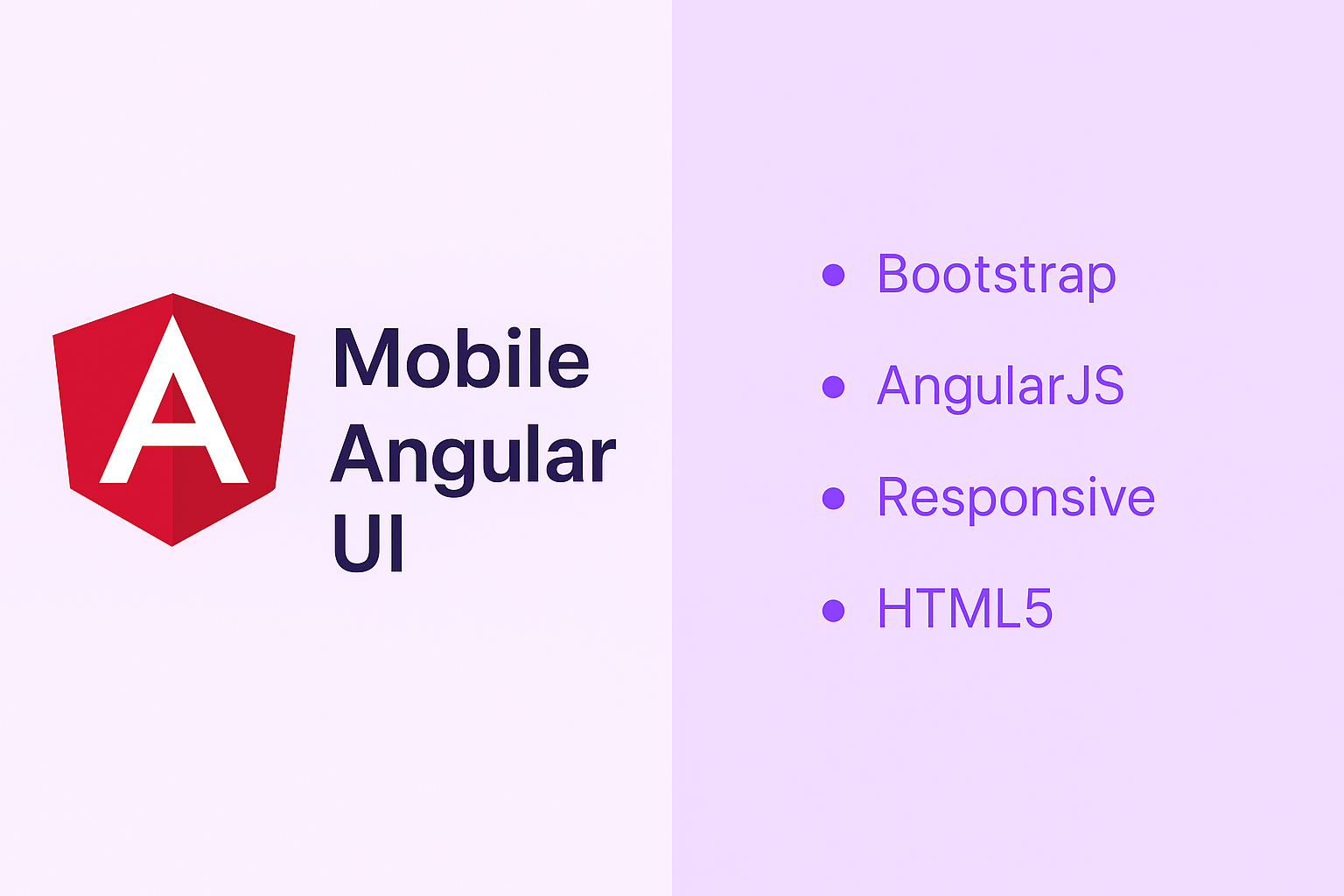
You might want to know which mobile app development frameworks can build efficient hybrid apps. Mobile Angular UI, an open-source mobile app framework, is one such solution to build hybrid apps.
This framework brings together three different and widely popular technological invention or programming languages namely,
- Angularjs
- Bootstrap
- HTML 5
Mobile Angular has a wide array of rich UI components to ease your app development process. Scrollable areas, dropdowns, sidebars, navbars, toggle switch, tabs, and dropdowns are some of these UI components.
Omitting the need of relying on jQuery dependencies and bootstrap js, this framework allows you to work with angularjs directives. For developing apps with Mobile Angular UI, you must be well-versed with Twitter Bootstrap and Angularjs.
Apps built using Mobile Angular UI
Tic-Tac Mobile, Hotelier News,iKeyBox
Benefits
- Easy-to-learn technology
- Strong community support
- Versatile components
- Build responsive hybrid apps
- Open-Source
Corona SDK

Typically, designed for developing mobile apps, Corona SDK is also a top choice for game designers and is also known as the 2D Game Engine. A special feature that makes it stand out from the rest of the frameworks is its support for calling or using native libraries.
It means that if the Corona core does not have any in-built API or library that you might want to use, you can call the native libraries of different programming languages like C, C++, or Java.
The Corona SDK is based entirely on a scripting language known as “Lua” that is lightweight and enables easy and fast development of apps. The apps made using Corona SDK are platform compatible and can run smoothly on mobile, desktop, and other smart TV devices.
Apps built using Corona SDK
Zip Zap, TinyBoxes, QuizTix, The Lost City
Benefits
- Zero charges for core functionalities
- Fast development
- Supports Native Library
- Platform compatible
- Easy to learn and use
Sencha Ext JS
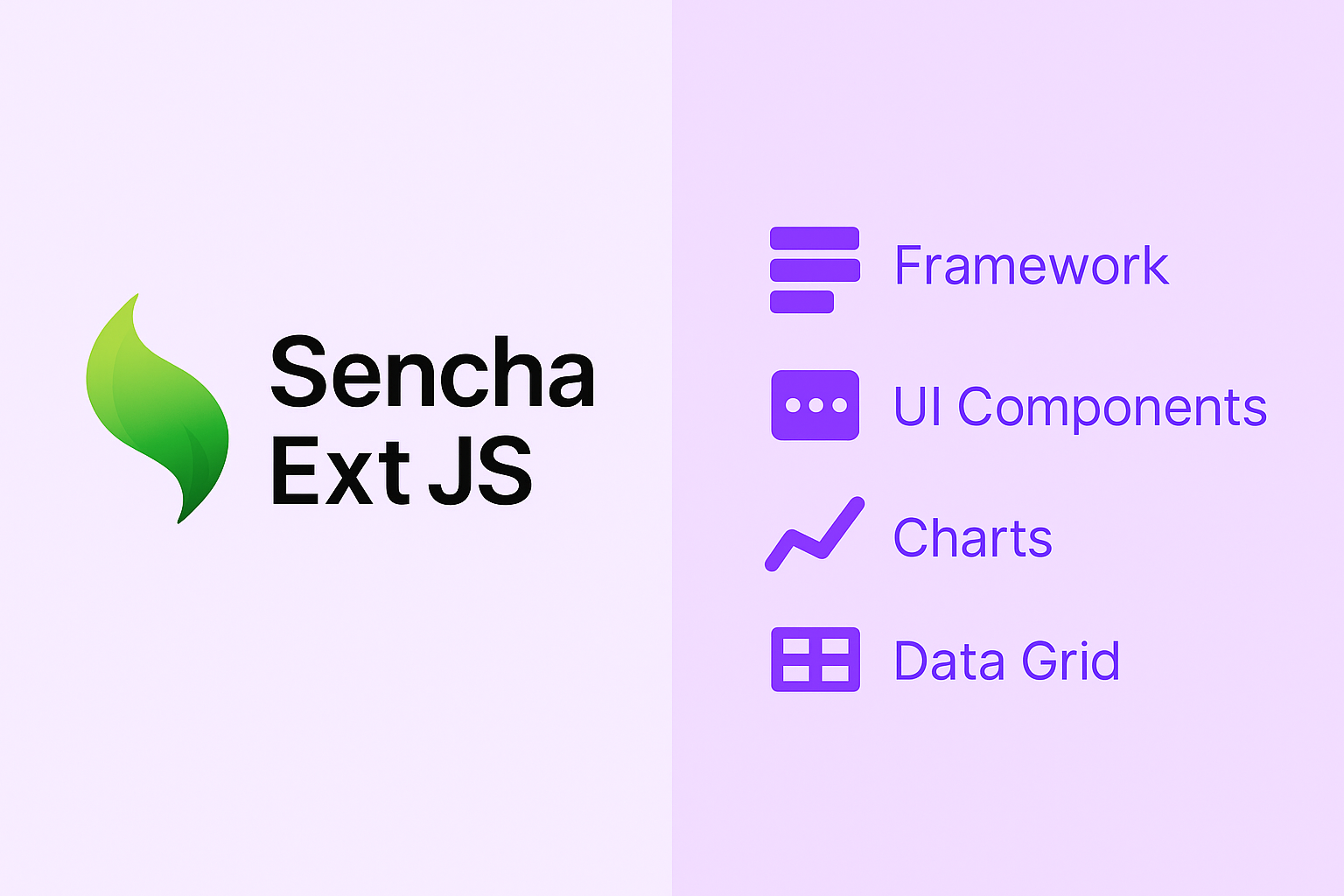
Sencha Ext JS (formerly Sencha Touch) is a JavaScript framework for building rich, interactive mobile and web app interfaces using HTML5, CSS and JavaScript. Originally from Sencha, the framework simplifies UI development with pre-built components and tools.
Sencha Ext JS lets you create clean, user-friendly interfaces without needing deep knowledge of complex programming languages. It follows the MVC (Model-View-Controller) architecture, separating logic from UI for better code organization and scalability.
What sets Sencha Ext JS apart is its large library of pre-built components, responsive UI and customizable themes. It also has an in-built DOM manipulation system so you don’t need to use external libraries.
Benefits
- Customizable UI themes
- Uses standard web technologies (HTML, CSS, JS)
- Cost-effective development
- Built-in charts, widgets, and animations
- Responsive, adaptive interface
Factors to take into consideration while choosing a framework

Platform compatibility
Before choosing a framework, you need to be clear with the fact that “ which platform your app needs to be run on”?
If you want to build an app for iOS or Android or both, with an enterprise mobile app development company then you must opt for a platform-compatible framework.
Speed Optimization
This factor needs to be taken into consideration from the perspective of both the user and developer. If you are a developer, you need to opt for a framework that will speed up your development process and take less time in coding.
Also, from a user’s perspective, you need the app to function smoothly at breakneck speed.
Adaptability
The framework needs to be adaptable whenever a new change is made in the technical specifications.
Also, choosing a framework for mobile app development requires that you as a developer know that the apps built using the framework will be adaptable to changes and updates in the near future.
Development Cost
Every developer wants to deliver a high-quality product, and every client wants to have the best possible app. But the major question developers need to ask themselves before choosing a framework is, “will that framework be cost-effective?”
You need to choose a framework that meets the user’s expectations and uses the best technology in the provided budget.
To Summarize
Selecting the right mobile app development framework in 2025 requires clarity on your project goals, technical requirements and long term scalability. With technology evolving fast, businesses need to keep up with frameworks that offer flexibility, community support and cross platform compatibility.
Whether you are building a native, hybrid or enterprise grade mobile solution, the right foundation will impact user experience and development speed.
If you want to turn an idea into a high performing, future proof app eSparkBiz offers expert led mobile app development services to fit your business needs. With over 14+ years of industry experience our team combines deep technical expertise with agile development to deliver robust, scalable and intuitive applications across platforms.
Partner with eSparkBiz to build Awesome Apps with the Right Technology!
-
What’s the most-used mobile app development framework in 2025?
Flutter continues to be the most used framework in 2025 due to its fast performance, single codebase advantage, and growing developer support across platforms.
- Flutter
- React Native
- Swift (for iOS Native Apps)
-
Which mobile frameworks let you build once and run everywhere?
Time’s money, especially when building apps. Cross-platform frameworks help by letting developers skip the whole “build twice” thing. A few worth noting:
- Flutter – Dart-based. Comes with a built-in toolkit for beautiful UIs and ships fast.
- React Native – JavaScript-driven. If your web team’s already fluent in JS, it’s a smooth transition.
- Xamarin – Runs on C#. It’s not the flashiest, but .NET folks appreciate the integration.
-
How do you pick the right app framework?
There’s no cheat sheet just a few questions that’ll point you in the right direction:
- Are you building something performance-heavy, or is speed to market the bigger priority?
- Does your team already know Dart, JavaScript, Swift, or C#?
- How important is long-term support, plugin availability, and community activity?
-
What are the top frameworks people are actually using?
This year, these five are on most developers’ radars and for good reason:
- Flutter: Snappy UIs, live reload, and minimal friction.
- React Native: Devs already doing React love the familiarity.
- Swift: Still the go-to if you’re all-in on iOS
- Kotlin: Made by JetBrains. Endorsed by Google. Enough said.
- Xamarin: Best suited for C# veterans who don’t want to start from scratch.
-
Native vs cross-platform - Which one is better than the other?
Here’s the deal:
- Native apps (think Swift or Kotlin) are buttery smooth, give you full access to device features, and typically perform better.
- But they also mean double the development time if you’re targeting both iOS and Android.
- Cross-platform tools like Flutter or React Native? You trade a bit of native perfection for faster launches and easier updates.
- For most apps, especially MVPs or startups the tradeoff is worth it.
- Unless you’re building a high-end game or something hardware-heavy, users won’t notice.



